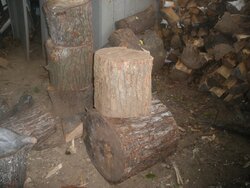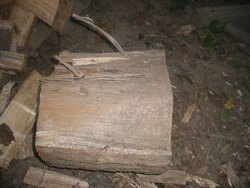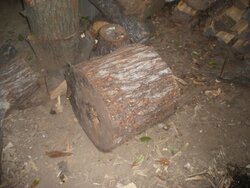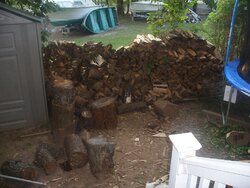Is the bark already gone, or at least falling off of this wood now? I've split some that was very dry, down around 16% on the moisture meter, and it wasn't too hard to split. The rounds weren't huge though....maybe like 12" at the biggest.
My rounds are around 24" give or take a few inches. The bark comes off easily. I don't have moisture meter yet. I have hand split different kinds of woods and usually there is some moisture in the woods that gets squeezed out when you drop the axe into it. Most of this locust is bone dry. No moisture comes out when I sink the axe in.








